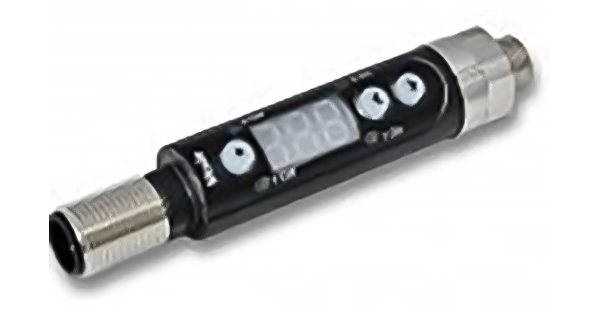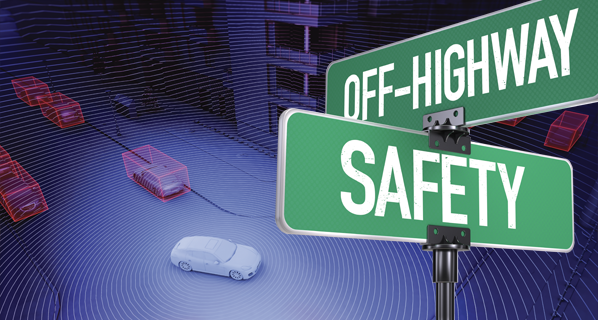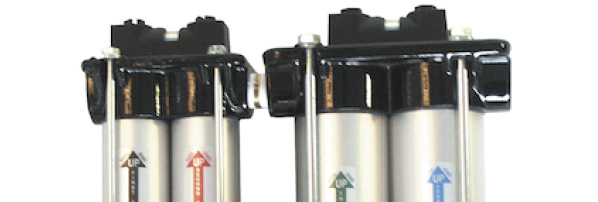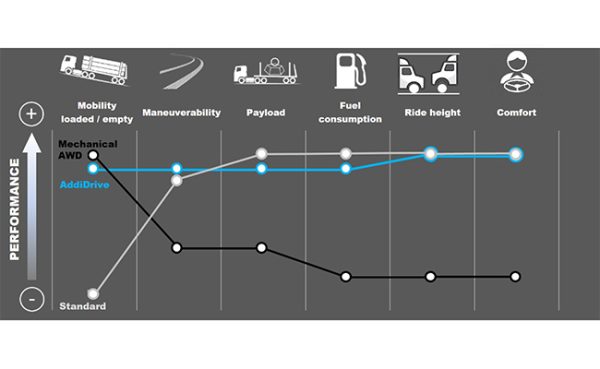Piab’s piSAFE Helps Safe Lifting of Heavy Products
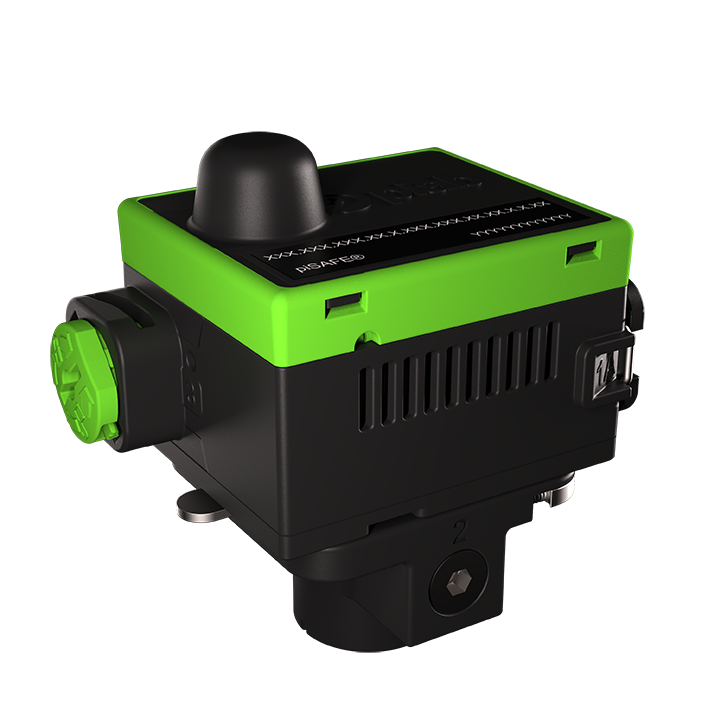 By Andrea Bodenhagen, Global Ownership Content Manager, Piab.
By Andrea Bodenhagen, Global Ownership Content Manager, Piab.
In the automotive industry, safety of operations plays an important role, particularly when troubleshooting or maintaining a robotic system. If the compressed air or vacuum is interrupted for any reason, the operator needs to enter the robot cell without being endangered by falling parts. Taking these requirements into consideration led to the development of the Piab’s piSAFE program, consisting of decentralized vacuum pump units with integrated check valves and separate check valves for centralized vacuum generation systems.
A U.S. manufacturer of automotive lift assist equipment had been using our vacuum check valves but had a problem of self-adhesion of the suction cups. Replacing our vacuum check valves with the new piSAFE solved the problem. This is because the piSAFE requires a signal to be turned on.
Our vacuum check valves are designed so that the vacuum cup immediately grabs and holds as soon as it comes in contact with the part. This prevents parts from falling and protects against injury to the operators and damage to the parts if power or air is lost. But it also caused faults when operators of the lift assist system inadvertently touched production parts before the cups were properly positioned. This made it necessary for the operator to “float” the cup using the blow-off function to prevent the cup from adhering to the part before the signal was given for the vacuum to engage. This caused interruptions in the process flow, reducing efficiency and productivity.
The piSAFE vacuum pump unit can be integrated into the end-of-arm tool (EOAT) as a decentralized vacuum generator. With its integrated vacuum safety nonreturn valve, it provides more control in case of leakage in one of the suction cups, while at the same time allowing the material to be held by the other suction cups in the EOAT. If there is a power failure, the vacuum remains sealed, allowing the EOAT to hold the part despite the drop in compressed air flow.
Additionally, the customers of this equipment manufacturer were concerned with air consumption and noise levels in their plants. They were looking to reduce both while maintaining safety and increasing productivity.
COAX technology
Equipped with a vacuum ejector based on Piab’s high-performance, energy efficient COAX technology, the piSAFE vacuum has an optional energy savings feature similar to Piab’s flagship pump, the piCOMPACT ejector. It automatically shuts off the compressed air supply when it reaches a sufficient vacuum level and automatically recharges if the vacuum level drops. The function is fully pneumatic and can save up to 98% of compressed air usage in a lifting cycle. Additionally, the deployment of COAX ejectors makes it possible to achieve a consistent high vacuum force even under fluctuating air conditions.
An important advantage of using the piSAFE vacuum ejector is its decentralized vacuum generation solution. It reduces installation costs because there is no need for separate valve stations, expensive workarounds, or add-on modules such as mechanical or vacuum-tank safety arrangements.
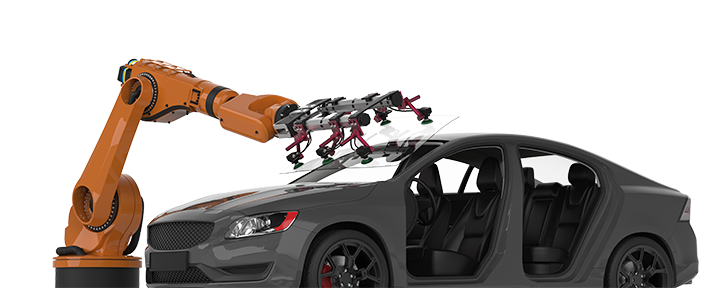
piSAFE mounting a car windshield.
For the automotive lift assist manufacturer, another important feature of the piSAFE solution is that it overcomes the issue of unwanted self-adhesion. To support safety, maximum release speed, and an air-consumption free release, the piSAFE pump unit offers a completely new release function: an atmospheric quick release that is normally closed (AQR-NC).
Even though the traditional blow-off release function is safe, it uses compressed air when in operation. The traditional atmospheric quick release in the normally open (AQR-NO) version uses no air when in operation, but it is not safe in the event of a compressed air power failure.
The unique release function in AQR-NC is safe and energy efficient. It’s safe since it’s closed and needs separate pilot air for activation but uses only a minimum amount of air in every cycle. It only needs the pilot air to open it, which is the air volume from the activating valve and the piSAFE unit itself. By using the atmosphere as a source to equalize the vacuum pressure in the unit, it provides a quick release. Due to the low pilot air pressure required to break away for release, even several units on larger systems can be simultaneously released using very little additional air. This prevents draining the compressed air pressure of the whole system when pressure may be needed for other applications in the factory. It is particularly suitable when there is a need for a reduction in compressed air consumption, or when safety is an issue due to a loss of power or compressed air while moving a heavy part that is held by suction cups.
Compressed air usage
As an example of the different compressed air utilization rates of the three release functions, consider an installation on a robot with six piSAFE units. Using the blow-off release, each unit consumes approximately 160 Nl/m at a pressure level of 6 bar. When releasing a product, the operator needs to run air for at least a second, which is short but adequate in a correctly designed system. In every cycle this device uses 6 x 160 / 60 x 1 equaling 16 liters of air, plus the air in the 4-meter tubing from the activation valve down to the piSAFE units, which is approximately 1 liter. The same system with the new AQR-NC would only use the air in the tubing, its pilot air for opening and closing it to ATM, which equals 1 liter. The same system with an AQR-NO release system activated internally in every piSAFE unit would use no air but would be unsafe.
The newly developed AQR-NC release function available with piSAFE uses only a little more air than the AQR-NO release function but provides greater safety in case of power or compressed air failures when holding parts.
In the case of the automotive lift assist manufacturer, Piab’s new piSAFE vacuum check valves with normally closed AQR feature provided an energy saving safety release of parts, requiring a low-pressure signal to release parts or float on the part until the correct pick-up position is located, and the vacuum signal is turned on. This AQR-NC only uses 03 Nl/Min. Hence, the complete air usage per cycle per piSAFE unit only used a total of 0.3 Nl/min for a 60 second operation. Six piSAFE units per EOAT means the plant was only using 1.5 Nl/min on this cell per cycle. Past solutions used 175.5 Nl/min leading to a 114% decrease in energy usage.
The energy savings were a great benefit, and the reduced noise level provided a much better work environment for employees. There was virtually no noise once the vacuum system went into energy-saving mode. This shows clearly that Piab lives up to its vision of believing in an automated world where no resources are wasted and no humans are injured.

A piSAFE unit holding a metal sheet in a press shop.
Quick and easy changes
Besides energy, safety, and noise solutions, the piSAFE unit also provided drop-in replacements of the current Vactrap without changing any cup placements on the tool. There is also the benefit of universal mounting – meaning the ability to use one unit for a right-hand or left-hand assembly. They can now stock one common part for all their applications.
Thanks to its quick connect lock and modular design, the piSAFE pump can be exchanged quickly and easily at each position in the EOAT without special tools. Because the frame stays in position, no realignment of the EOAT is necessary when exchanging pump units. This reduces machine downtime and helps keep production running.
During development the focus was placed on using lightweight materials for the piSAFE pump unit. This reduces wear on robotic motors and drives and enables higher speed and acceleration of the process. Alternatively, it can also mean the deployment of a smaller, less expensive robot. Paired with the small overall package size and one common housing, independent of which of the three different release option is chosen, the piSAFE unit is an optimum choice for reduced maintenance and where space is limited.
For centralized systems operating with one vacuum pump for all suction cups on an EOAT a separate vacuum safety valve was developed that keeps a grip on heavy parts when there is a loss of vacuum at the pump. In case of a leakage in one suction cup, atmospheric air will go through that leaking cup, preventing the remaining cups on the EOAT from losing vacuum and preventing the part from falling.

